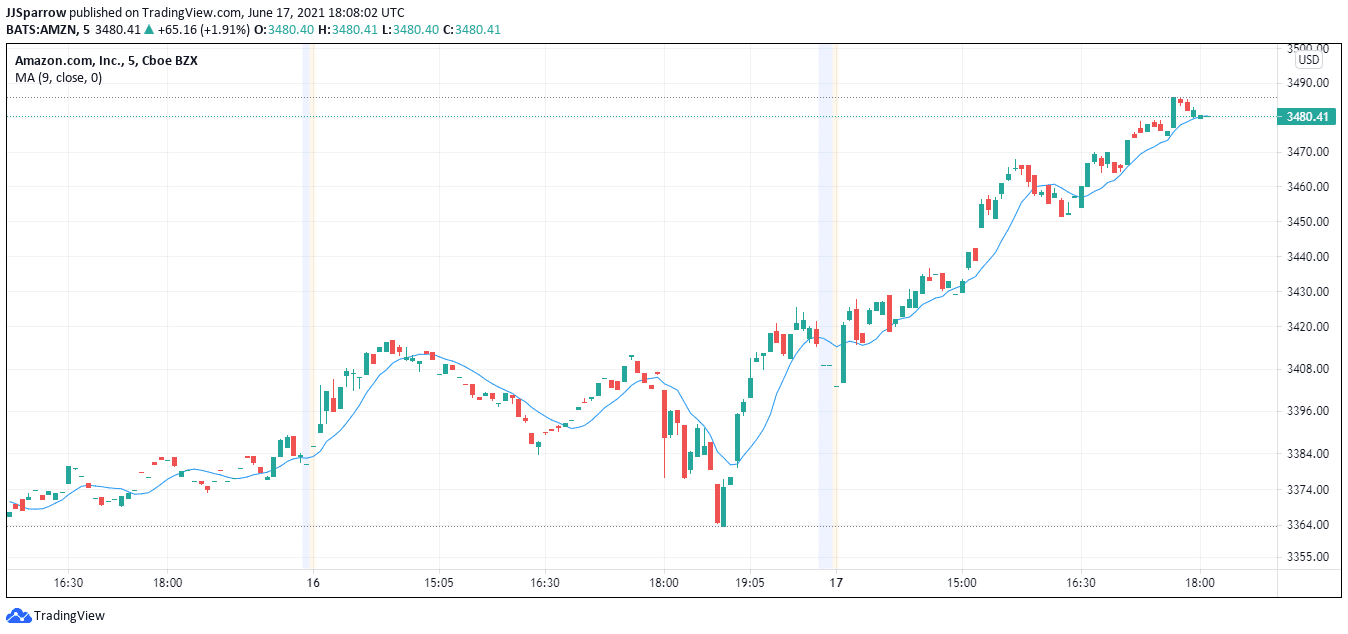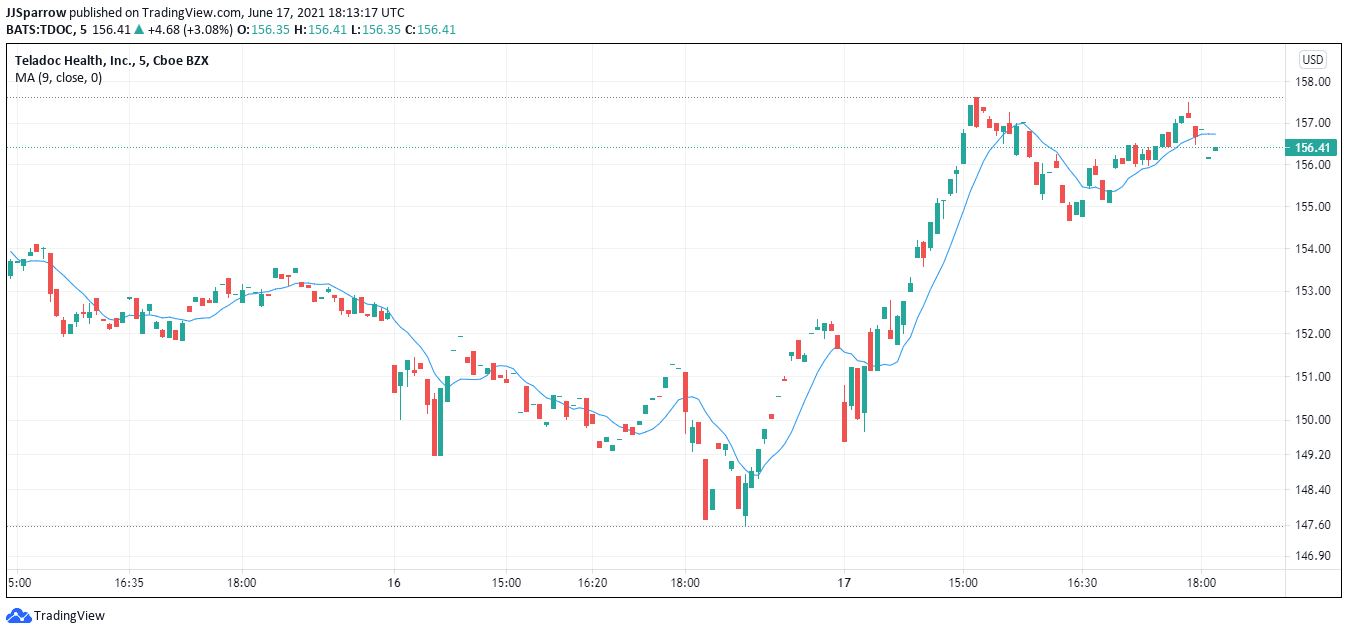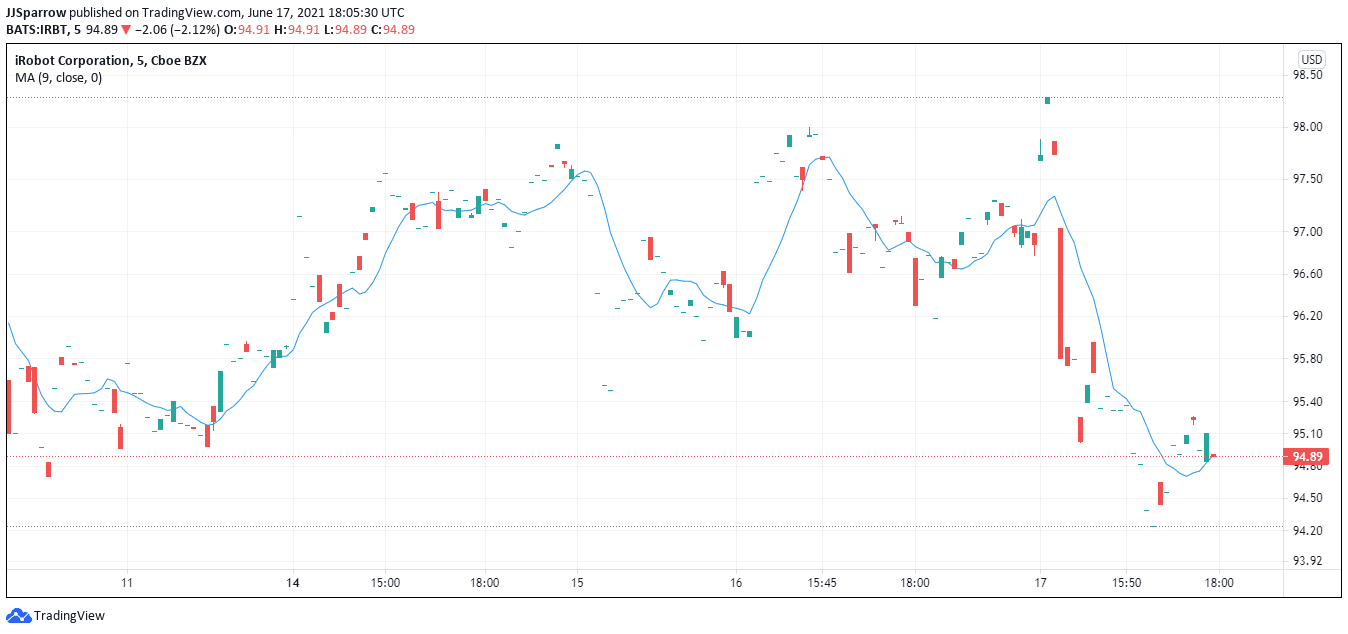5 Best Long-Term Stocks to Buy in June 2021
Please note that we are not authorised to provide any investment advice. The content on this page is for information purposes only.
Investors are always looking for the best long-term stocks they can invest in. These outlier stocks are meant to give a higher return on investments than any other financial instruments.
Our picks are at the forefront of online shopping, virtual medicine, electric mobility, robotics, and security. These five companies have the propensity to grow and post returns in the future.
1. Amazon (NASDAQ: AMZN)

Starting our best long-term stocks list is American online shopping giant Amazon. Amazon’s crucial position in the 2020 lockdown saw it benefit most from the digital transition forced on the whole world.
Topping the global charts on the most visited US retail websites in 2019 with 214.8 million visitors, Amazon website traffic more than quadrupled to 2.437 billion visits per month in Oct. 2020, making it a clear winner in the highly competitive retailing industry.
The visits also generated returns, as revealed on its last earnings call. According to the Seattle-based ecommerce juggernaut, its Q1 2021 revenue surged to $108.5 billion, up 44% year-over-year, beating market analysts’ expectation of $104.5 billion.
Its cloud and storage arm Amazon Web Services (AWS), also posted good returns surpassing analysts’ expectation of $9.54 per share to $15.79 per share and tying down over $8 billion for the quarter.
This being the first quarter, Amazon stock is set for a bumper year.
In the last 5 years, AMZN stock has made new highs 67 times, offering returns on investment (ROI) over 388.62%. In addition, Amazon’s share earnings per share (EPS) is at $15.80, showing a 65.54% increase.
At the moment, AMZN is trading at $3,461. Looking at its technicals, Amazon is on an uptrend surpassing the 20-day moving average (MA) support at $3,270.76. In addition, the moving average convergence and divergence (MACD) are also bullish, showing 30.40.
Considering its long-term potential, Amazon stock is bullish on the 200-day MA surpassing the indicator’s trend line of $3,211.86.
67% of all retail investor accounts lose money when trading CFDs with this provider.
2. Teladoc Health (NYSE: TDOC)
One other area we have looked into for picking the best long-term stocks is in the healthcare sector. Again, in this sector, Teladoc stands out. With much of the world observing social distancing, those who needed medical attention had to rely on remote consultations through video conferencing calls.
This is a new norm that might remain even after the pandemic due to the convenience it offers patients. A research report by Amwell showed that the rate at which Telehealth is being used is up 22% for consumers and 80% for physicians, up from 8% and 22% respectively from 2019.
This strategically places Teladoc health in a position to benefit, as shown in its Q1 earnings call. Its revenue shot up to $454 million, increasing 151% year-over-year. In addition, the company said it had 3.2 million visitors alone in the first quarter.
Despite its impressive performance, the TDOC is trading below its potential at $153.59, making it a bargain for investors.

With its plethora of services ranging from telehealth to AI and analytics, telehealth devices, Teladoc is expected to see significant growth in the next few years.
TDOC is barely above the 20-day MA at $149.04, pointing to a bull market on the trading charts. Its RSI is at 52.75, showing that investors believe in the long-term prospects for the healthcare provider.
Its MACD stands at 1.13, while its DMI is at 21.4669.
Looking at the 200-day MA, TDOC is performing below expectation following a stellar year. It is below the indicator’s $200.37 trend line.
67% of all retail investor accounts lose money when trading CFDs with this provider.
3. iRobot (NASDAQ: IRBT)
Robots have been a fascination for most consumers, but their utility has always seemed a barrier. However, iRobot Corporation is looking to change the narrative. With growing market demand for automated help for household chores, iRobot is one of the best long-term stocks you should be investing in.
The company’s Roomba vacuum cleaner is a popular feature in many American homes. It also made a foray into consumer-friendly robots that clean pools and gutters, disinfect homes, and mow lawns.
It has also seen its revenue grow 58% to $303 million, with its profit margin at 5% and EPS at $0.41. iRobot has grown 76.2% with no debts in the last five years.

IRBT stock is trying to pick up the pieces after plummeting from a Jan high of $161.41 to $89.98. At the moment of writing, IRBT stock is trading at $95.49, making it one of the best long-term stocks to invest in.
IRBT’s technicals are weak, reflecting the general market mood. On the 20-day MA, IRBT is below the indicator, which is at $97.24. Its RSI is 44.20, showing investors are still buying IRBT for the long haul while its MACD is 1.36.
Its DMI is 18.54, which points to a potential bull run. However, its 200-day MA is bearish at $97, trading below the indicator.
67% of all retail investor accounts lose money when trading CFDs with this provider.
4. Tesla (NASDAQ: TSLA)
Another company that makes our best long-term stocks list is EV firm Tesla Inc. Tesla’s climate-friendly sedans make it a good investment for the long haul.
As the world battles with growing climate concerns, automobile companies are transitioning to battery-powered cars to cut down on carbon emissions. Tesla, which enjoys a first-mover advantage, has been a leading EV company in the nascent space.
\About $594 million GAAP operating income and a $438 million net income reflected in its earnings report. The company is also looking at rolling out more long-range EVs in the coming years and is moving into the truck manufacturing field.

In the last five years, Tesla’s valuation has grown by 28%, with the US market contributing the most.
Currently trading at $619.51, TSLA is a good long-term investment. Looking at its performance, TSLA is bullish on the 20-day MA, with the indicator providing support at $599.66. Its RSI is also encouraging at 51.47, while its DMI is at 22.01.
Moving on to its MACD, TSLA stock is showing an uptrend at 21.68. However, it is barely above the 200-day MA trend line at $611.21, making it unclear if it would continue its bullish run.
67% of all retail investor accounts lose money when trading CFDs with this provider.
5. Palo Alto Networks (NYSE: PANW)
Cybersecurity is a growing concern for companies and individuals alike, with the recent spate of cyber-attacks on key industrial providers.
The Colonial Pipeline and JBS hack of the last two months have driven home this point, making cybersecurity a top priority for most governments and individuals.
With the world becoming more interconnected daily, Palo Alto Networks will have its work cut out for it. With the US tech company having over 70,000 businesses on its contacts, 2021 may be a very busy year.

In its Q3 earnings call, the cybersecurity firm said its revenue rose 24% year-over-year to $1.07 billion, surpassing expectations by $10 million. PANW’s EPS was put at $1.38, nine cents above analysts’ forecasts, with its net income surging 22% to $139.5 million.
PANW’s revenue has grown 29.72%, beating the sector’s 12.87% in the last five years. Trading at $372.29 at the moment, PANW is up for a bargain. Above the 20-day MA indicator, it denotes a bullish run at $360.77, and its RSI is 61.42.
Its DMI is also bullish at 29.139, while its MACD is at 4.43. Thus, PANW stock is showing an uptrend surpassing the 200-day MA’s $318.94 valuation in the long term.
67% of all retail investor accounts lose money when trading CFDs with this provider.




